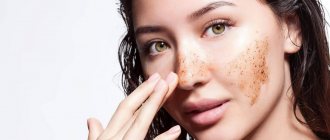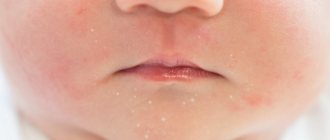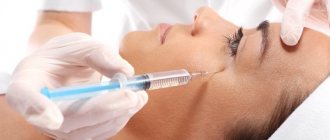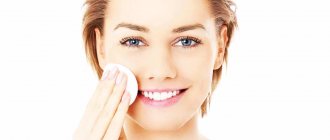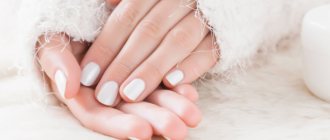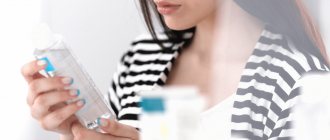If the skin does not look very fresh and healthy, if there are problems on it, then such skin is usually called problematic. Problematic skin can affect anyone at any age. If your skin is perfect when you are young, it may deteriorate later. Hormonal changes greatly affect her condition. In addition, if you experience stress, if there are many other unfavorable factors in your life, your skin condition will worsen. Skin can be dry, oily, or combination. Skin types are also distinguished by age. This is young skin, mature, or aging. If a person turns to a dermatologist, then most often he turns to him with problem skin.
What skin types are most prone to problems?
Skin problems can either be permanent or disappear over time. Constant skin problems lower a person’s self-esteem and spoil his mood. If you have combination skin, rashes and other problems appear on it less often than on other types. Oily and dry skin often have problems.
Oily skin most often occurs in brunettes, as well as in young girls. This type of skin has its advantages. She ages later than other types, wrinkles do not appear as quickly. However, usually such skin is shiny and blackheads and pimples appear on it. This type of skin is especially susceptible to rashes during puberty, as well as at times when the level of hormones in the body changes.
Dry skin is not oily. She lacks sebum. Peeling often appears on it, it looks dry. External factors have a very strong effect on such skin. It often develops irritation, redness, and rashes. If you wash your face with bad water, your skin will tighten and become very uncomfortable. For such skin, you need to carefully select skincare products, as there is a high probability of developing allergies.
| Sign up for a consultation by phone: +7 (495) 430-01-77 When you sign up online, you receive not only a discount on the service, but also an individual consultation with a leading specialist! | Sign up online 5% discount |
Recommendations for daily care for oily skin of the face and body
First of all, patients suffering from acne should stop using alkaline soap. It creates a favorable environment for the growth of propionibacteria, which contribute to the development of inflammation. It is better to refuse bar soap, since it contains a large number of aggressive components. To cleanse oily, problem skin, it is better to use products with a pH of 5.5-7.0.35.38
Do not use cosmetics that contain alcohol to care for problem skin. Many patients believe that it can eliminate oily shine, but at the same time, alcohol-containing cosmetics can also cause an exacerbation of acne.38
Under no circumstances should you clean your face yourself by squeezing out acne elements. This can provoke an inflammatory process and lead to an increase in the number of rashes. It is also necessary to check cosmetics for the presence of comedogenic components. Avoid using products containing isopropyl, lanolin, D- and C-red dyes, myristate, laureth-4, and sodium lauryl sulfate.38
Causes of problems
Problematic skin cannot be regarded as a disease. Previously, doctors said that problematic skin and rashes can appear due to the fact that its owner eats poorly and does not take care of it. Now, after research, it has been revealed that skin problems appear due to stress, as well as due to the fact that the sebaceous glands do not function properly. Problem skin appears when the sebaceous glands are too active, when there are too dry or too oily areas of the skin. In addition, enlarged pores affect the appearance of rashes. If dead skin, as well as fat, accumulate in these pores, and all this is affected by pathogenic bacteria, then rashes begin to appear on the face. The most painful rashes appear on the back, face, and chest.
If you have problem skin, you should check your digestive organs, as well as your endocrine system. A predisposition to age spots can be inherited.
Hormonal changes have a particularly strong effect on the appearance of rashes. Moreover, they act on her not only during puberty, but also at a more mature age. If your skin is sagging, it means your body doesn't have enough collagen. Dry skin is most susceptible to age-related changes; wrinkles appear on it more quickly.
It is better not to self-medicate. The best way out of the situation would be to contact cosmetologists or dermatologists and check the whole body for problems.
How to care for oily and problem skin: 4 important steps
Facial and body care at home should pursue the following goals35:
- improving appearance (including masking defects using cosmetics that do not contain comedogenic ingredients);
- thorough cleansing;
- reducing the growth of propionibacteria;
- decreased secretion of the sebaceous glands;
- sebum absorption;
- elimination of hyperkeratosis;
- Sun protection;
- hydration.
Particularly important for patients with acne are such stages of care as cleansing, toning and moisturizing the skin.
Cleansing
Oily skin should be cleansed with special products designed specifically for it. But you shouldn’t fanatically cleanse your skin with aggressive cosmetics. This can provoke a reverse reaction - increase inflammation, lead to an increase in the number of acne elements, and dehydration of the epidermis.35, 228
Cleansing should be soft and delicate, so it is better to use emulsions, foams, lotions, and tonics for this. It is desirable that they contain zinc, which regulates the production of sebum, as well as restorative components.35, 228
Patients with acne are often interested in what water to wash their face with oily skin. Water at room temperature is suitable for this skin type. You should not intensively rub a face or body with acne with your hands or a sponge - this can lead to damage to acne and an increase in the number of acne elements. Cleansers should have a neutral pH, since changes in the acidity of the epidermis can activate the growth of pathogenic microflora.35
Before washing, you need to remove makeup using micellar water. Products for the care of acne-prone skin should not contain dyes, alcohol, or soap. Water and soft surfactants form microspheres invisible to the eye that remove impurities, sebum, and cosmetic residues from the face. You can wipe your face with micellar water immediately before applying topical medications. This will remove excess sebum, sweat, and impurities.35
Deep cleansing: exfoliation
Exfoliating agents that help remove dead cells can be used up to 2-3 times a week. With acne, keratinization processes are disrupted, so it is necessary to provide the epidermis with assistance in cleansing. Thanks to exfoliation, the skin texture is evened out, its texture and color are improved, the mouths of the sebaceous hair follicles are freed from substances accumulated in them, which promotes the outflow of sebum. Chemical and mechanical methods can be used for exfoliation35:
- Exfoliant creams. They have a more gentle effect. They may contain alpha, beta and polyhydroxy acids that have an exfoliating effect. The components that make up exfoliating creams additionally have a moisturizing effect and help regulate keratinization. They gently exfoliate horn cells with minimal risk of damage and irritation. Synthetic detergents provide better cleaning.
- Scrubs. They contain abrasive particles of different sizes. Therefore, you can take care of problem skin with scrubbing products only during periods of acne remission (when there are no inflammatory elements or irritations), so as not to injure the epidermis. They intensively cleanse, polish, and mattify the skin. For exfoliation, it is better to use products with plant-based fine abrasive components: oatmeal, volcanic sand, etc. Activated carbon and different types of clays work well with dirt and sebum. Scrubs often contain ingredients such as zinc, pyruvic and salicylic acid, kaolin, zinc, calendula extract, tea tree oil, and fruit acids. They help improve the condition of problem skin, but do not cure it (acne requires mandatory medical treatment). Do not rub the scrubs too hard so as not to injure the epidermis.
It is not recommended to scrub more than 1-2 times a week, since the stratum corneum has limited thickness. Too intense exfoliation can damage the germ layer, make the skin vulnerable, irritated, pigmented, and increase its sensitivity. Facial cleansing by coagulation or mechanical removal of blackheads and other acne lesions can lead to the formation of iatrogenic defects.35
Toning
This is an important stage aimed at restoring the acid-base balance of the skin. For toning, you should choose a tonic or lotion, taking into account the intensity of sebum production and the severity of acne. If there is hypersecretion of sebum, increased thickness, or absence (small amount) of inflammation, it is better to use lotions without alcohol. It is desirable that they contain herbal extracts and essential oils that reduce inflammation and skin irritation. Toning lotions with AHA acids, which have a moisturizing, keratoregulating, and anti-inflammatory effect, have proven themselves to be effective. In cases of severe hypersecretion, it is better to use tonics with antimicrobial and mattifying effects. They usually contain nicotinamide and magnesium silicate.35
Hydration
Problematic skin needs hydration in summer and winter, but many patients ignore this stage of care. Without moisture, it acquires a shine, which is mistakenly mistaken for excessive oiliness, and they begin to actively fight it. The biggest mistake is drying the skin with alcohol-containing products and cleansing with harsh scrubs. But the result of such actions will be increased sebum secretion, the appearance of comedones and acne. Further, hyperkeratosis will be added to them, which arose against the background of aggressive exfoliation of the stratum corneum.203
Collagen, hyaluronic acid, ceramides, glycerin, panthenol, algae extracts, aloe juice well saturate the epidermal cells with moisture. A competent choice of moisturizing cosmetics is extremely important. But it is better to abandon creams in favor of products with a light and refreshing texture (emulsion, gel, fluid) that will not form an occlusive film. Preference should be given to cosmetics with a natural type of moisturizing factor.35, 203
How to cure problem skin
The cosmetologist must identify the source of your problems, and also choose the method that is most suitable for eliminating them. For this, a variety of cosmetic procedures and techniques are used. In addition, you can undergo procedures that will slow down aging.
To get a noticeable effect, you can go for procedures that use Botox or biogel. If you need to smooth out wrinkles, then go for mesotherapy. Injections will be given into the skin. Mesotherapy is also suitable for getting rid of other problems. In addition, dermatology and aesthetic medicine can save you from cellulite, obesity, and varicose veins.
In cosmetology, there are a large number of techniques that are aimed at getting rid of various problems. If the problems are not particularly serious, then you can visit the peeling procedure. During this procedure, dead cells will be removed from your face and new ones will begin to grow. Lifting will help restore skin tone, remove aging, and rejuvenate a person.
Modern cosmetology can save you not only from skin problems, but also remove moles, scars, and warts.
Application of Azelik® gel in the treatment of acne
It is not enough to use a cleanser or wipe your face with toner. It is important to use medications selected by a specialist. Thus, for mild to moderate acne, azelaic acid preparations are indicated9. One of them is Azelik® gel. Its use helps normalize keratinization and reduces the amount of free fatty acids on the skin5.
Azelaic acid has antimicrobial activity against Staphylococcus epidermidis and propionibacteria5. The anti-inflammatory effect of 15% azelaic acid gel is explained by a decrease in the metabolism of neutrophils and the free radical forms of oxygen they synthesize5.
Hyperkeratosis of the facial skin: what it is and treatment
Hyperkeratosis is a thickening of the stratum corneum of the epidermis, as a result of disruption of the processes of cell division and desquamation of dead particles. With this disease, bumpy facial skin, dehydrated areas, and severe peeling are observed. Hyperkeratosis often develops as a concomitant pathology of the underlying disease:
- diabetes;
- psoriasis;
- lack of vitamins, minerals;
- fungal infection.
Therapeutic tactics are aimed at eliminating the underlying disease. Moisturizing creams, chemical peeling procedures, and mesotherapy are used as symptomatic remedies. Cryotherapy and microdermabrasion are also effective.
Drugs that increase the exfoliating ability of cells demonstrate effectiveness. This group of medications includes ointments based on retinoids. In case of severe inflammation, non-steroidal drugs are prescribed to relieve hyperemia and itching. To boost immunity and improve overall well-being, it is recommended to take vitamins.
Skin prone to rosacea (rosacea) and redness
A distinctive feature is the appearance of red, inflamed spots on the cheeks, nose and chin. Such skin is sensitive to weather conditions - burning and other signs of discomfort occur in the sun and cold. Small blood vessels (rosacea) often appear on the face and chest.
Features of skin prone to redness and rosacea:
- Does not tolerate aggressive care products and requires the use of cosmetics with an anti-inflammatory effect.
- Areas of peeling, wrinkles, freckles, and age spots quickly appear.
- Pink and red pimples may appear, sometimes purulent.
Most suitable products:
- Cosmetics with anti-inflammatory effect. Soothing creams and face masks are perfect. All other means must be used with caution so as not to aggravate the process.
- Sunscreen compounds. Necessary because skin prone to redness and rosacea reacts too strongly to sunlight.
- Protective creams. In winter, you need to use medications that protect the skin from cold temperatures and wind. This will make it possible to avoid exacerbation of rosacea.
Recommended procedures:
- Laser that eliminates dilated blood vessels and redness. This is one of the most effective treatment methods for inflammation and rosacea.
- Very gentle superficial chemical peeling. Deeper options are not suitable in this case.
- Botox and Dysport injectables, as well as Retisline and Juvederm fillers used to eliminate wrinkles. They are safe and can improve skin condition.
Laser rejuvenation
The best results when caring for such skin are obtained by combined tactics - a combination of cosmetics and various procedures performed by a cosmetologist in a clinic.
Table of contents
- Expression and fine wrinkles
- Uneven skin color
- Wrinkles around the eyes
- Loose skin
- Rosacea
- Post-acne scars
- Changing the contours of the oval face
- Enlarged pores
- Accurate diagnosis of signs of aging and results of aesthetic procedures
- Principles of treatment
The first signs of aging and other aesthetic defects are changes in the structure, color and/or function of a skin area that cause concern to the patient.
In our company you can purchase the following equipment for correcting signs of aging and other aesthetic defects:
- Thermage (Solta Medical)
- Maximus (Pollogen by Lumenis)
- GeneO+ (Pollogen by Lumenis)
- UltraPulse (Lumenis)
- AcuPulse (Lumenis)
- Fraxel (Solta Medical)
- Antera 3D (Miravex)
Accurate diagnosis of signs of aging and results of aesthetic procedures
Accurate diagnosis and reliable confirmation of the results of aesthetic interventions are coming to the fore today. This approach to assessing the signs of skin aging allows not only to make a correct diagnosis, but also to document the results of the procedure, which is significant evidence of the success of the cosmetologist. To do this, you can use a three-dimensional modeling system - for example, Antera 3D .
Antera 3D consists of a high-definition camera with a special housing that blocks outside light from entering the shooting field. There are LEDs around the camera lens; when shooting, they turn on alternately, illuminating the skin in different spectral ranges. In a few seconds, more than a hundred photographs are taken in different lighting conditions, from which a computer algorithm models a three-dimensional photo.
Features of the Antera 3D three-dimensional modeling system :
- Skin texture - the degree of uniformity and smoothness.
- Wrinkles - linear dimensions, depth, severity index.
- Hypertrophic scars - volume, area.
- Deep wrinkles and furrows - precise localization, depth measurement.
- Skin neoplasms - volume, area, shade.
- Pores - number, severity index.
- Melanin - uniform distribution, skin tones.
- Hemoglobin - uniformity of distribution, content in the skin.
Several versions of Antera 3D allow you to choose the tool that suits a particular specialist.
Pimples, rashes and blemishes, post-acne
The treatment process is now underway
Bright, noticeable rashes on the face, the spots that remain after them, and often scars - this is what people want to get rid of when visiting a cosmetologist. Solving this problem is not a matter of weeks and often not even months. When the face gradually clears up, there is no limit to the happiness of my patients; there is no need to encourage and motivate as much as at the beginning of treatment, the obvious result gives strength and faith in success.
In this case - examination, external treatment, cleaning procedures, peelings and anti-acne injections. The period between photos is 3 months. This is not the final result, we are still in the process.
Changing the contours of the oval face
The gradual loss of an even facial contour is one of the first signs of skin aging and is usually observed in men and women after 45–55 years. The main reason for changes in facial contours is aging.
With age, the quality of the skin gradually deteriorates, the ligamentous apparatus of the muscular aponeurotic layer weakens, the volume decreases and redistribution of subcutaneous adipose tissue occurs in the middle and lower third of the face, and bone tissue is resorbed. Outwardly, this is manifested by a violation of the clear line of the oval of the face, loss of volume in the cheek-zygomatic region, the formation of deep nasolabial folds and “marionette lines”, drooping of the corners of the lips, and deepening of the chin fold. The face begins to look loose ( Fig. 8 ).
Find out more about changing the contours of the oval of the face and methods of non-surgical correction here.
Rice. 8. Changing facial contours over time (Pinterest
Wrinkles around the eyes
This is a clear sign of aging of the facial skin around the eyes of varying degrees of severity - from fine lines to large creases. Their main causes are chrono- and photoaging. A significant aggravating factor is smoking, which enhances the destructive effect of matrix metalloproteinases on extracellular matrix proteins (collagen, elastin) and contributes to the earlier appearance of wrinkles around the eyes.
One of the classifications of periorbital wrinkles is the following ( Fig. 4 ):
- Type I - wrinkles extend from the outer edge of the eye to the eyebrow and zygomatic process.
- Type II - wrinkles extend from the outer edge of the eye to the zygomatic process.
- Type III - single wrinkles are limited to the outer edge of the eye.
Find out more about wrinkles around the eyes and how to treat them here.
Rice. 4. Types of periorbital wrinkles (Tamura BM, Odo MY Classification of periorbital wrinkles and treatment with botulinum toxin type A. Surg Cosmet Dermatol 2011; 3(2): 129)
https://www.surgicalcosmetic.org.br - page 131, figure 2
Dry skin - care features
Due to the weak secretion of sebum, pimples and blackheads almost never appear on it. If they do occur, it is usually in the form of isolated rashes. Dry skin has very small pores that are practically invisible, so it does not have an oily sheen.
Its owners, as a rule, need a large amount of moisturizers. After washing, especially with soap, dry skin “tightens.” She is very sensitive and easily irritated by aggressive products or procedures.
Dry skin is susceptible to various dermatological diseases. From frost and heat it becomes inflamed and peels.
Ideal products for dry skin:
- Gentle cleansers that combine cleansing and moisturizing. These can be thicker, creamier formulations or light foaming products.
- Moisturizers that restore and nourish at the same time.
- Non-retinoid anti-aging products containing growth factors and peptides to prevent aging.
Recommended treatments for dry skin:
- Mesotherapy – injections of vitamins and nutritional components. Allows you to fight dryness and prevent early wilting.
- Plasmolifting is the introduction of the patient’s own plasma taken from his blood. It has a regenerating effect and inhibits age-related processes. The procedure makes the skin smoother and healthier.
- Face masks , including water-based ones, have a rejuvenating and moisturizing effect.
- Dysport and Botox will help in the fight against wrinkles. For dry skin, botulinum toxin-based treatments should be started as early as possible to prevent the aging process.
- Restylane, Juvederm and Sculptor fillers will remove wrinkles. With this type of skin, their use should begin at the first signs of aging.
Mesotherapy
Proper care will eliminate dry skin and slow down the aging process.
Combination skin – a cosmetologist will help you care for it
In this case, dry or normal areas alternate with oily areas located in the nose, forehead and chin. There is no “typical” behavior for this type - it all depends on the specific combination of areas. Its condition may fluctuate depending on the season, hormonal changes, stress, etc.
Recommended products for combination skin:
- In winter. Products that combat cold and dryness, which often occurs due to a long stay in a room with central heating.
- In summer. Moisturizing cosmetics that prevent aging.
- Always. Products with vitamins, growth factors, peptides and antioxidants that improve the condition of skin structures.
It is recommended to use a rich cream on dry areas and a light moisturizer on oilier ones. That is, owners of such skin will need several care products.
Applying a rich cream on dry areas
Ideal procedures:
- In this case, there are no uniform recommendations - they differ for each patient. For most people, plasma injection, mesotherapy, and facial cleansing are suitable in case of acne and other skin manifestations associated with clogged pores.
- For such skin, preparations based on botulinum toxin are recommended - Dysport, Botox and their analogues, fillers (fillers) based on hyaluronic acid and other components.
It is very difficult to choose the right methods for caring for combination skin - only a cosmetologist can do this. Trying on your own can cause serious harm.
Popular facial rejuvenation procedures
To carry out hardware procedures, special modern equipment is used. Most of them are considered multifunctional and can perform many different manipulations. It is necessary to examine in more detail the features of each procedure that can rejuvenate facial skin.
RF lifting
This technology has demonstrated high effectiveness in the fight against skin aging. RF lifting can tighten the oval of the face and correct it.
Radio waves are used here, they affect the deep layers of the dermis and also warm them up. As a result of heating, the tissues shrink and the fibers contract. After the procedure, the lifting effect is clearly visible and the skin tone increases. In addition, due to high temperature, elastin and collagen begin to be produced. New fibers appear and a framework is created.
RF lifting not only removes sagging and tightens the face, it slows down the process of wrinkles appearing in the future. The results obtained last for up to 3 years.
SMAS lifting
This skin rejuvenation technique does not cause pain and does not involve surgery. As women age, their muscles stretch, causing the skin to sag and wrinkles to appear.
During the SMAS procedure, the device creates ultrasound pulses that affect the deep layers of the skin. That is, these impulses reach the muscles of the frame, tightening them. The result is freshness and youthfulness of the skin.
ELOS rejuvenation
This solution helps combat skin changes that occur as a result of age. ELOS equipment creates two energies (light, electrical), which act in parallel. These energies contribute to the production of elastin and collagen. It is these substances that help make the skin more elastic and keep it toned. Due to age, the skin loses elastin and collagen, the skin sags, becomes thinner, and wrinkles appear.
ELOS technology allows you to launch natural processes that restore the skin. That is, the synthesis of elastin and collagen is stimulated. Those processes that occur with age occur more slowly, pigment spots disappear, scars, rosacea, wrinkles smooth out.
Mesotherapy
Today, hardware facial rejuvenation does not necessarily have to be done with injections. It is possible to deliver the necessary nutritional and moisturizing substances deep into the skin using modern equipment.
Non-injection mesotherapy allows you to remove some aesthetic problems:
- Enlarged pores;
- Earthy skin tone;
- Cuperosis;
- Hyperpigmentation;
- Skin laxity;
- Wrinkles.
Microdermabrasion
This method is also called diamond resurfacing, which allows you to cleanse the skin of dead cells. That is, deep peeling is performed. During the procedure, a diamond nozzle is used, onto which crumbs are applied. The latter may differ in its graininess.
Thanks to skin resurfacing, you can even out the relief, start the process of tissue renewal, and rejuvenate your face. It also ensures skin elasticity, smooths out wrinkles, tightens pores, and improves color. The first microdermabrasion procedure allows you to renew your skin. And if you complete the whole course, the woman gets rid of scars that appear as a result of hyperpigmentation and acne.
Microdermabrasion does not require anesthesia, does not require a recovery period and does not cause pain. As for the intensity and time of exposure to the device, all these points are discussed exclusively on an individual basis with a specialist. After all, the characteristics of human skin must be taken into account here.
Post-acne scars
These are skin changes in areas where acne inflammatory elements are healing, associated with the formation of connective tissue. The vast majority of post-acne scars appear on the site of papules and pustules; much less often they occur in the area of comedones.
If the skin is damaged at the level of the papillary dermis, recovery can occur without gross defects - only depigmented areas with focal atrophy remain. With complete destruction of the basement membrane, a scar is formed ( Fig. 7 ) with the growth of coarse fibrous collagen, deformation of blood and lymphatic vessels. If collagen synthesis exceeds its destruction, the scar becomes hypertrophic - it bulges above the skin. If fibroblast activity becomes excessive, a large keloid develops due to tumor-like proliferation of immature connective tissue.
There are no post-acne scars:
- Hypertrophic.
- Keloids.
- Atrophic:
- chipped (icepick scars);
- rounded (rolling scars);
- rectangular (boxcar scars).
About half of acne scars disrupt the structure and/or function of the skin. They disfigure the patient’s face, negatively affect his emotional state and self-esteem, and can provoke psychological disorders and complexes about his appearance.
Find out more about acne scars and their treatment methods here.
Rice . 7 . Chip atrophic post-acne scars (Danish national service on dermato-venereology)
Pimples on the cheeks. Before and after
Solving your acne problem is often only half the battle.
This beauty fell into my hands after almost all the rashes had passed. There were small scars left, lucky that they were quite flat (level with the skin, the relief was practically unchanged) and already quite annoying stagnant spots. The request was to work specifically with skin tone, i.e. with bluish spots.
The result in the photo is not just one procedure; it seems to me that the difference between the photos is about a year. But the visits were not frequent, mostly once every 4 weeks. Some procedures were traumatic, others not so much.
The effect increased gradually, but my patient began to notice improvements almost immediately. I remember how they laughed, her mother did not believe that this was the work of a cosmetologist
“It can’t be, most likely you’ve started eating normally,” my mother said. But actually, this is even a compliment; modern methods can do a lot, despite the fact that they believe in diet more))
The spots are gone, the scars partially remain, but they are small and almost invisible. The skin tone is much more even, which is what we wanted. And most importantly, happy eyes
Cosmetologist's work:
- Permanent procedures
- Once every 4 weeks
- Increasing effect
- Even skin tone

